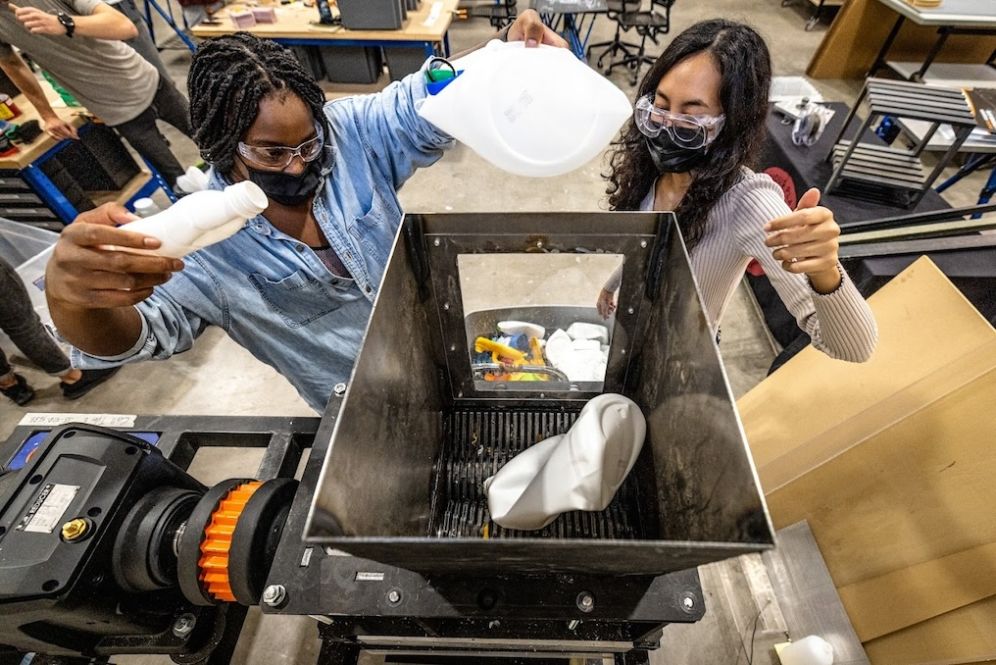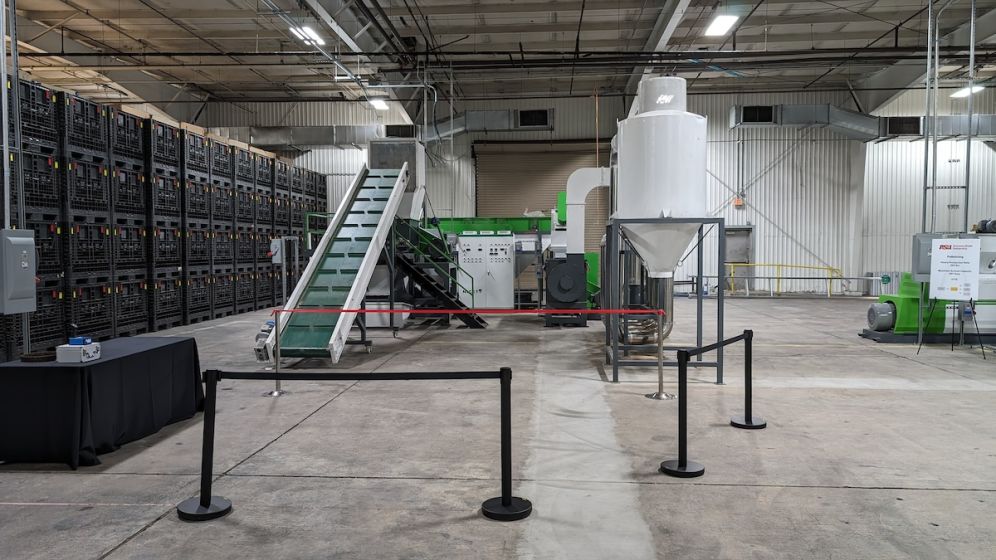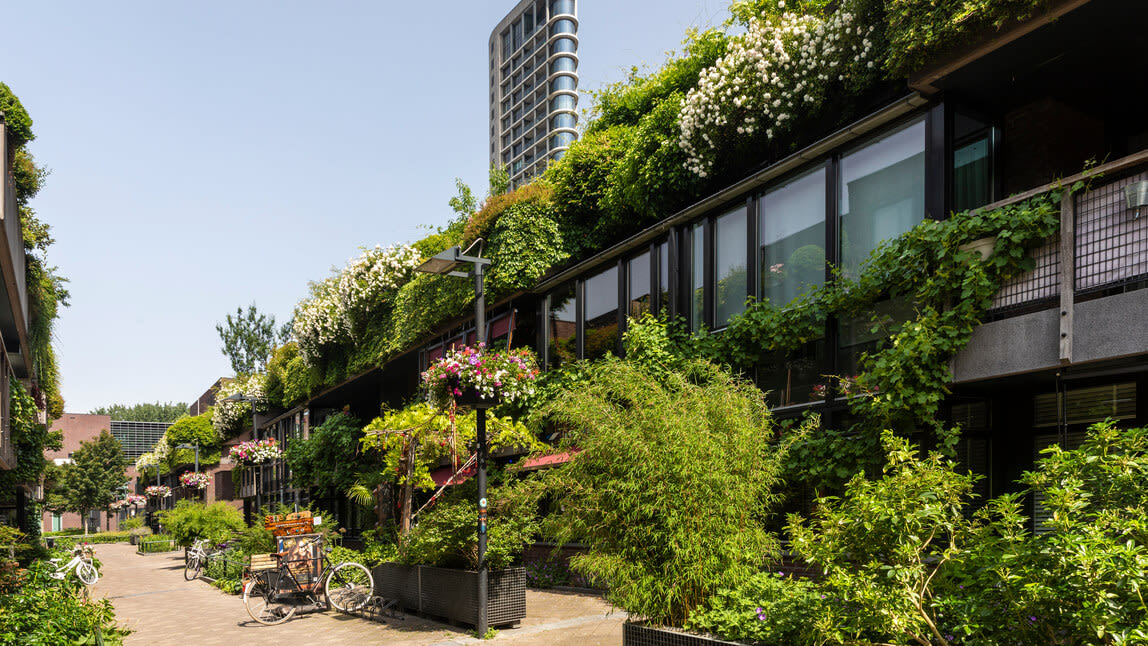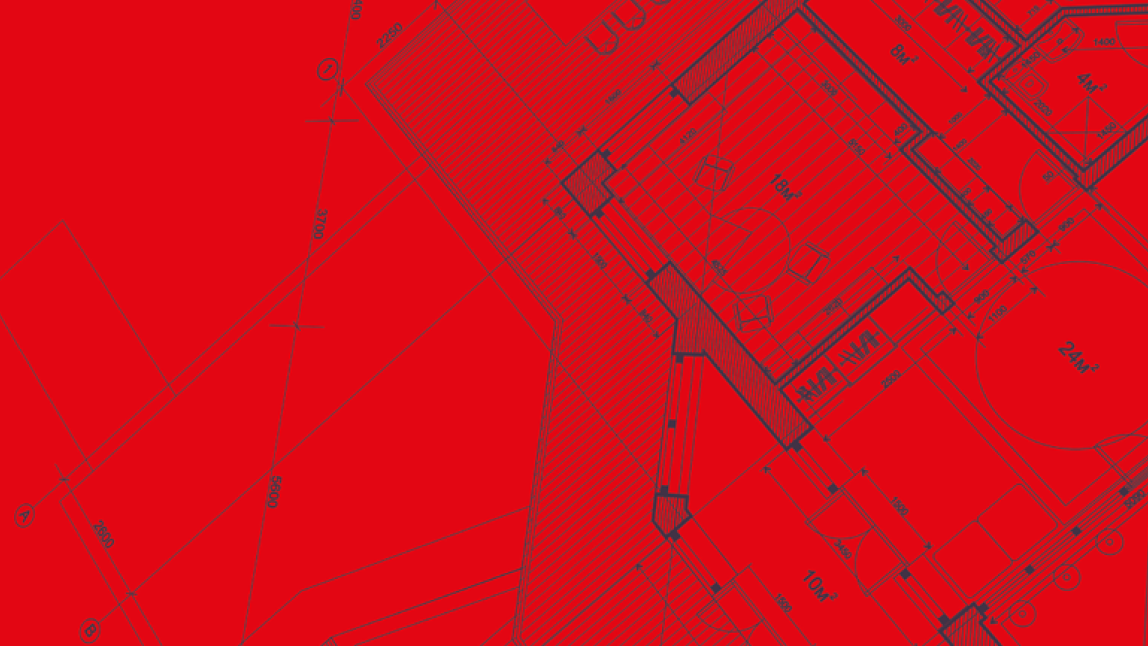Since 2011, the City of Phoenix and Arizona State University have partnered to accelerate the circular economy transition in the city. Characterised by insightful applied research and the launch of impactful initiatives such as Reimagine Phoenix and the Resource Innovation and Solutions Network, the partnership has played a critical role in more than doubling the city’s waste diversion rates in six years. After 2020, the partnership evolved from having a focus on applied research to curating pilot projects to support Phoenix’s circular ambitions.
How it started
Mayor Greg Stanton initiated an ambitious environmental and climate agenda when he was elected in 2011. At that time, Phoenix was landfilling an alarming 900,000 tonnes of waste, of which more than 600,000 tonnes originated from the residential solid waste stream.
In 2015, Mayor Stanton launched Reimagine Phoenix: Transforming Trash into Resources, an ambitious waste diversion action plan that aimed to divert 40% of waste from landfill by 2020. To support the Phoenix Public Works Department’s mandate to deliver this ambitious goal, a formal partnership with Arizona State University’s Rob and Melani Walton Sustainability Solutions Service was established to undertake studies focusing on increasing waste diversion and reducing greenhouse gas emissions within the city.
This collaboration aimed to bridge the gap between state-of-art academic knowledge and real-world implementation. Arizona State University (ASU) introduced the Resource Innovation and Solutions Network (RISN), a platform designed to convene and connect cross-sector stakeholders to eliminate barriers to implementing circular economycircular economyA systems solution framework that tackles global challenges like climate change, biodiversity loss, waste, and pollution. It is based on three principles, driven by design: eliminate waste and pollution, circulate products and materials (at their highest value), and regenerate nature. solutions. Subsequent workshops with city staff, local businesses, solution providers and other relevant city stakeholders prioritised key circular economy interventions that could divert valuable materials from landfill and reduce the city’s greenhouse gas emissions associated with solid waste.
Key initiatives
Between 2014 and 2020, ASU delivered over 30 applied research studies and pilot projects for the City of Phoenix. Notable projects included:
A multi-disciplinary student design challenge that explored the integration of Living Building concepts into the master plan for RISN’s Resource Innovation Campus and its headquarters building.
Multi-family Recycling (2015-2016)
A two-phase study to identify strategies and interventions to improve recycling in multi-family housing developments:
Phase one involved assessing current recycling infrastructure and communication strategies at sites.
Phase two used the assessments from Phase one to develop customised recycling programmes for each site, focused on overcoming barriers, improving collection efficiency, and consolidating logistics routes.
The study explored recycling and waste reduction policies that could be implemented in classrooms within the Paradise Valley Unified School District.
The project included teacher professional development workshops to promote circular economy and sustainability practices and empower educators to develop their own sustainability projects.
Food Resource Feasibility (2016)
The study involves collaboration between local grocers and the City of Phoenix to assess the economic viability of pre-consumer food waste solutions in the Phoenix metropolitan region.
The team developed scenarios, evaluated technical solutions and provided policy recommendations. The project included an analysis of best practices in food resource management and reverse logisticsreverse logisticsSupply chains dedicated to the reverse flow of products and materials for the purpose of maintenance, repair, reuse, refurbishment, remanufacture, recycling, or regenerating natural systems. for backhauling to grocery distribution centres.
A three-part study to evaluate the economic potential of implementing a circular economy in Maricopa County.
The first study estimated a maximum contribution of USD 1.9 billion to the gross state product and the creation of 35,454 jobs.
The second study estimated that a new PET plastic processor, which also processes glass and metals, could add USD 123 million to the gross state product and generate around 200 jobs annually.
GHG Emissions Inventory (2016-2023)
A series of projects that have enabled the City of Phoenix to better understand sources and sinks for GHG emissions and to identify opportunities to address urban climate protection, public engagement, and collaborative sustainability-driven economic development.
The study explored the feasibility of a regional organics management system optimised for the local geography, collaborating with six municipalities, two counties, and a Native American tribe.
The project proposed a decentralised approach involving 11 organic waste processing facilities, potentially diverting 56% of organic waste from as many as 28 participating municipalities.
After an initial focus on applied research studies, the partnership has evolved to focus on the delivery of curated pilot projects to assist the city in implementing solutions identified in the various studies. The ASU team developed the Circular Living Lab (CLL), using ASU’s campus as a living lab to redesign recycling and remanufacturing value chains. ASU is split across five campuses, comprising 500 buildings and over 120,000 people, which represents a sizable pilot in working across the recycling value chain. CLL is a collaboration between Rob and Melani Walton Sustainability Solutions Services, ASU Zero Waste, Facilities, University Sustainability Practices, two student organisations, and faculty from five colleges at ASU.
Using an interdisciplinary approach, the lab designs, tests, and pilots grassroots recycling and manufacturing models to process campus plastic waste into new products. Lessons from this small-scale plastics factory will inform replication in communities, empowering them to convert plastic waste into economic opportunities and environmental benefits.

The CLL plastic microfactory in action
Achievements
By the end of 2020, the City of Phoenix and ASU partnership achieved a commendable 38% diversion from landfill, and in doing so, realised significant economic benefits for the city. New businesses emerged, jobs were created, and revenues increased due to a higher diversion rate and rethinking of waste management practices. ASU's advisory role, executed through research studies and pilot projects, played a pivotal part in realising these benefits. Additionally, the partnership enhanced networking, identified new collaborations via RISN, and offered students the opportunity to engage with real-world challenges, resulting in mutual benefits for both the City and ASU.
Among the partnership's most significant achievements was the launch of the RISN incubator in 2016. Functioning as a business accelerator, the incubator supported entrepreneurs in the early stages of circular economy innovation. The incubator provided mentorship, industry introductions, technical expertise, business training, and a pre-qualification process for funding opportunities. Importantly, the city also provided access to waste feedstocks that entrepreneurs could use to test and pilot new solutions. The RISN incubator had remarkable impacts. As of June 2020, it incubated 19 companies, launched 25 products, and filed 14 patents. The ventures raised USD 3.72 million in capital, generated USD 4.14 million in revenues, and created 68 jobs along with 55 internships. Recyclops, based in Salt Lake City, emerged as one of the incubator's success stories, now operating in over 30 states and serving as a model replicated by organisations globally.
Challenges faced and lessons learned
The partnership between the city of Phoenix and ASU was the first of its kind for both partners and did not come without its challenges.
Regular communication between partners helps streamline operations
The City's bureaucratic processes, time-consuming agreement negotiations and permit requirements posed obstacles. Regular check-ins via monthly calls for all partners, quarterly reports, and kick-off meetings for new projects were implemented to streamline operations.
Providing financial support and advice to circular startups is resource-intensive but crucial
Constraints imposed by the federal grants used to fund the RISN incubator meant it was unable to offer seed funding for the startups involved. As financial support is often a critical success factor for circular startups, the incubator made tracking grant opportunities and supporting entrepreneurs to submit grant applications a critical activity, despite it being resource-intensive.
Projects dependent on feedstock quantities need the right data to ensure feasibility
Previous pilot projects have depended on access to The Transfer Station and Material Recovery Facility waste streams as the main source of feedstock. However, a key learning that came out of these studies was that without the right data, the feedstock for the project was unreliable and could not guarantee long-term success. Since then, the City has shifted towards more data-driven and realistic commitment terms as it relates to feedstock amounts or other benefits.
Collaboration across jurisdictional boundaries and borders is essential to achieving economies of scale for circular solutions
Many of the research studies and pilots highlighted the substantial economies of scale needed for solutions to be financially viable. As a result, the geographic scope of several studies and pilots were expanded to include surrounding communities, demonstrating the need for more dynamic collaboration across jurisdictional boundaries and borders. Additionally, solution providers are sought statewide as well as within close by states.
Team and budget
The Department of Public Works uses an enterprise model for funding, utilising service fees to fund its operations. Economic development forms part of the department’s funding, emphasising the city's commitment to fostering the circular economy. The USD 2.5 million five-year project funded by the City was supported by economic impact assessment reports outlining the potential economic opportunities and job creation associated with circular economy interventions. A full-time project manager at both the City of Phoenix and at ASU worked together to make sure that the partnership ran smoothly.
Looking ahead
Phoenix’s Climate Action Plan sets an enhanced goal of 50% waste diversion by 2030 and zero waste by 2050. A Zero Waste and Circular Economy Roadmap is in development to hone in on current and future strategies to help achieve the waste diversion goals. Efforts will focus on maximising material reusereuseThe repeated use of a product or component for its intended purpose without significant modification. and recycling to divert waste from landfill and unlock economic opportunities.
An exciting opportunity for the partnership is the development of a Resource Innovation Campus, a 40-acre space next to the City’s existing Material Recovery Facility and Compost Facility. This initiative aims to attract companies specialising in waste processing and cultivate an entrepreneurial ecosystem committed to the circular economy.
Further collaborations with ASU include expanding and scaling the CLL plastics microfactory into a 10,000-square-foot space to scale CLL with Goodwill of Central and Northern Arizona (GCNA) and Hustle PHX. Starting with PP (Polypropylene) and PE (Polyethylene), the team will build out the material recovery with GCNA, which will be co-located with their material grading and sorting 300,000 square foot space. The equitable economic development model will be developed with Hustle PHX. From plastics, the teams will begin exploring opportunities to expand into used and discarded textiles and electronic waste.

The 10,000 square foot space acquired to enable the scaling of the CLL plastics microfactory.
The mutual benefits that have been achieved through this city-university collaboration are a testament to the success this kind of model can bring in transitioning to a circular economy. It is also a model that can be replicated in other cities with thriving academic environments.
For more information on the City of Phoenix’s circular economy work, visit: Phoenix’s Zero Waste and Circular Economy Roadmap.
For more information on Arizona State University’s work, visit: ASU’s Rob and Melani Walton Sustainability Solutions page.






